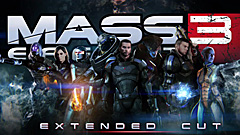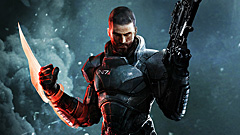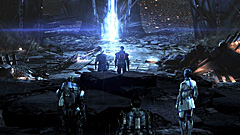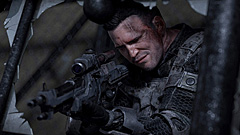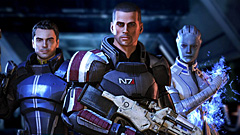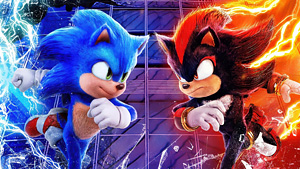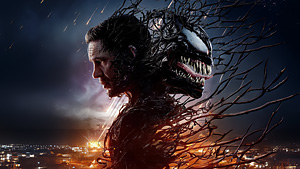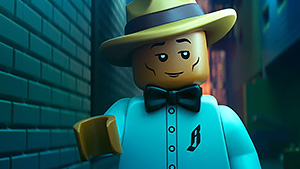June 29, 2012 by Paul Curtin

BioWare’s new take on Mass Effect 3’s endings have just been released for free in an effort to help mend some broken ties with furious fanboys who didn’t get their closure the first time around. Although I wasn’t furious after beating Mass Effect 3 earlier this year, I was still disappointed like others with the lack of closure and epicness that the rest of the series had done so well and that kept the final game in the trilogy from being a true masterpiece.
Spoiler Warning: Obviously, this post contains major spoilers that you will not want to see if you still haven’t beat the game.
The Extended Cut DLC places players a couple chapters back from the end of the game, which allows for a nice little refresher on the story and even some extra cutscenes that weren’t present in the original’s release that help build upon the story by answering some questions that the original ending left up in the air. For example: During the game’s most memorable moment (in my opinion) where Shepard is rushing towards the beam at the end and fighting for his life, a new extra scene shows one of the crew members being injured by the Reaper’s destruction and needing to be evacuated from the battlefield. Joker is then shown bringing the Normandy down in order to rescue said injured crew member and answering the question that many had the first time around dealing with the fates of those who accompany Shepard on his last mission on Earth before the Citadel blast. The scene is also extended and more emotional if one of the two crew members being evaced is Shepard’s love interest, making the scene even more epic.
After making it through the beam and stopping the Illusive Man in the same way as the last game and once again failing to activate the crucible, Shepard ascends to his meeting with the Star Child, giving the player the same three options. But this is where BioWare has done a good job this time around in the DLC by adding far more dialog options to the final scene with the Star Child in order to better explain the choice the player is about to make as Shepard. One of the big problems with the original ending was that it felt rushed and by forcing a player to instantly pick the fate of the entire galaxy after only just being told three options with few details was overwhelming. Although such a decision should be overwhelming for a human and that feeling translating to the player is somewhat acceptable, the way in which all three endings were presented after Shepard’s decision was very underwhelming, and all three endings were far too similar. But with the new dialog options and cutscenes, players can better understand the effects of their decisions and gain more closure.
After going through each of the new dialog options and gaining a far better understanding of what was going on, I was greeted with the same three options at the very end by the Star Child… or so it seemed.
Refusal Ending
Even though the ending is still set up the same way with three clear choices for players to make, there is a new fourth Refusal option which lets Shepard refuse to make any choice in almost a “We don’t negotiate with terrorists” theme. I found this out the hard way by pointing my gun at the Star Child and pulling the trigger thinking nothing would happen. Instantly the Star Child’s voice changed to a deeper and disappointed tone saying “So be it” and then disappearing, leaving Shepard to die alone and resulting in me dooming the universe I just invested 100 hours in trying to save.
This Refusal choice also adds a new cutscene that shows how after the Reapers wiped everything out that Liara managed to leave a package buried underground with a holograph of herself explaining the events of their cycle for those of future cycles to find and be warned of their impending doom. After the credits there is also a slightly different scene where instead of the human grandfather with his grandson, it shows an Asari grandmother who sounds a lot like Liara. Seems like Buzz Aldrin wasn’t in the budget for more voice-over work. The grandmother implies that the knowledge found was then used by future cycles in the same position to defeat the Reapers.
The new Refusal ending is by far the worst. I’m glad that all the controversy surrounding the endings and watching the original three endings has already ruined the story for me and that unique sense of an individual path that I alone took and got after finishing Mass Effect 2 is long gone, because at this point I didn’t even care what happened and just laughed at how I ruined everything by accidentally pressing a button too quickly yet again — in Mass Effect 2 I accidentally punched a female reporter in the face, in Mass Effect 3‘s Extended Cut I accidentally doomed the universe. Oops! But there’s no question if I had gotten this ending the first time around, I would have been part of the angry mob with pitchforks outside BioWare’s studio, so it’s strange that they even spent time adding it.
Control Ending
If you don’t shoot the Star Child or stall long enough to make the Refusal response and doom everyone like I did, then you’ll be able to again pick from one of the same three options, the first being the new Control ending. This was the option I picked during my original playthrough because even with spending the entire game fighting to prevent the Illusive Man from controlling the Reapers and becoming a god, it seemed like the only happy ending where I was able to sacrifice myself in order to stop the Reapers and save everyone in the galaxy.
The new Control ending goes into further detail about how Shepard has found a new purpose in his new greater state as a guardian who watches over and protects the galaxy. Additional cutscenes and images show crew members and their species living peacefully under Sheapard’s watch with the Reapers now being used to help rebuild after the destruction they caused, and Shepard explains that their knowledge and power has been harnessed to create a future with limitless possibilities. Once again, the human bionic Shepard dies, but overall this still seems like the true happy ending.
Synthesis Ending
The next Synthesis choice still remains the weirdest. The Star Child in the new DLC dialog explains that this is the ideal and correct choice that will bring everyone together and further evolve both synthetics and organics. Although this ending is said by the Child as the best and presented as the “Good Ending”, it still doesn’t feel like the right choice. The whole game is about diversity, and even with Shepard’s story being about bringing everyone together, it’s also about how everyone can be different and yet still bond by choice through their own free will.
There’s even the option for Shepard to play peacekeeper during ME3‘s original campaign by bringing Geth and Quarian peace and forging a friendship between Legion and Tali, yet that seems to be completely ignored by the Star Child in the end. The extra scenes after the decision is made, which show everyone with creepy glowing green eyes and circuits running underneath their skin reminiscent of Too Human, also doesn’t help in making this choice seem like the best method of peace when the game’s most prominent feature is freedom of choice, and through this ending Shepard is basically forcing the entire galaxy to assimilate under his decision without a choice.
Destroy Ending
The final and most bad-ass ending is the Destroy option. Just like the original Destroy ending, Shepard chooses to destroy the core of the Citadel, which results in the death of all synthetic life. The Star Child explains that despite destroying all synthetics, they’ll rise up again in time to wage war on organics basically making it pointless for the future of mankind. This ending is also difficult to think of as the right choice because it results in both Legion’s and EDI’s destruction along with their entire races. Since both the Geth and Quarian races were able to be reasoned with and Shepard’s only goal was to stop the Reapers, it doesn’t sit right that a Paragon-aligned Shepard is killing off their entire species to save his own and betraying his crew members to save his own ass.
The extended Destroy ending also features the same extra scene from the original Destroy ending where Shepard is teased to still be alive and breathing under a pile of rubble with no explanation of how he got there, setting up his return and most likely future generations of Shepard’s fighting synthetics.
After all of the various choices, there are also additional extra scenes that piece together some of the bigger plot holes left by the original ending. One scene clearly shows Admiral Hackett telling Joker to get out of the Crucible’s blast, which gives an explanation as to why the Normandy is so far away after the battle and also explains that Joker and the rest of the crew didn’t just cowardly abandon the battle and Shepard.
The same scene with the Normandy crashing into some sort of tropical planet is again shown, but now with an additional scene that show the entire crew still alive in the ship and placing Shepard’s name on their wall of fallen crew members. Out of all the extra Extended Edition content, in my mind, this is the most important. My favorite part of Mass Effect 2 was seeing who survived due to my choices during the final suicide mission. After beating the third game and seeing only a couple crew members randomly exit the ship, I was left wondering what the hell had happened to the rest of my crew as the game left on a massive cliffhanger. The scene then ends with a shot of the Normandy repaired and taking off away from the planet it crashed on, giving fans the closure they needed.
With choice playing such a big role in the development of the characters and the story told in each player’s Mass Effect experience, it still doesn’t sit right that players are forced into the same four generic endings. The entire series was always about the player having a unique experience and having four endings that everyone gets access to doesn’t live up to the epicness that had originally been promised by BioWare. While the endings are still limited, BioWare didn’t have to offer anything for free, and at least the new endings give more closure to fans and help answer a ton of questions people had. It’s nice that BioWare tried to please fans by fixing the endings, especially all for free, but a shame some cutscenes weren’t originally included because these endings give enough closure to where most fans would have accepted them the first time around and not felt ripped off.
Had Mass Effect 3: Extended Cut‘s endings been present in the original, I would have probably pushed my original score of Mass Effect 3 from a 4.5 to a 5 out of 5, so those who have yet to play the trilogy are strongly recommended to get the full experience by downloading the Extended Cut and ignoring all that nonsense BioWare originally spouted about truly unique endings when promoting the first game.


